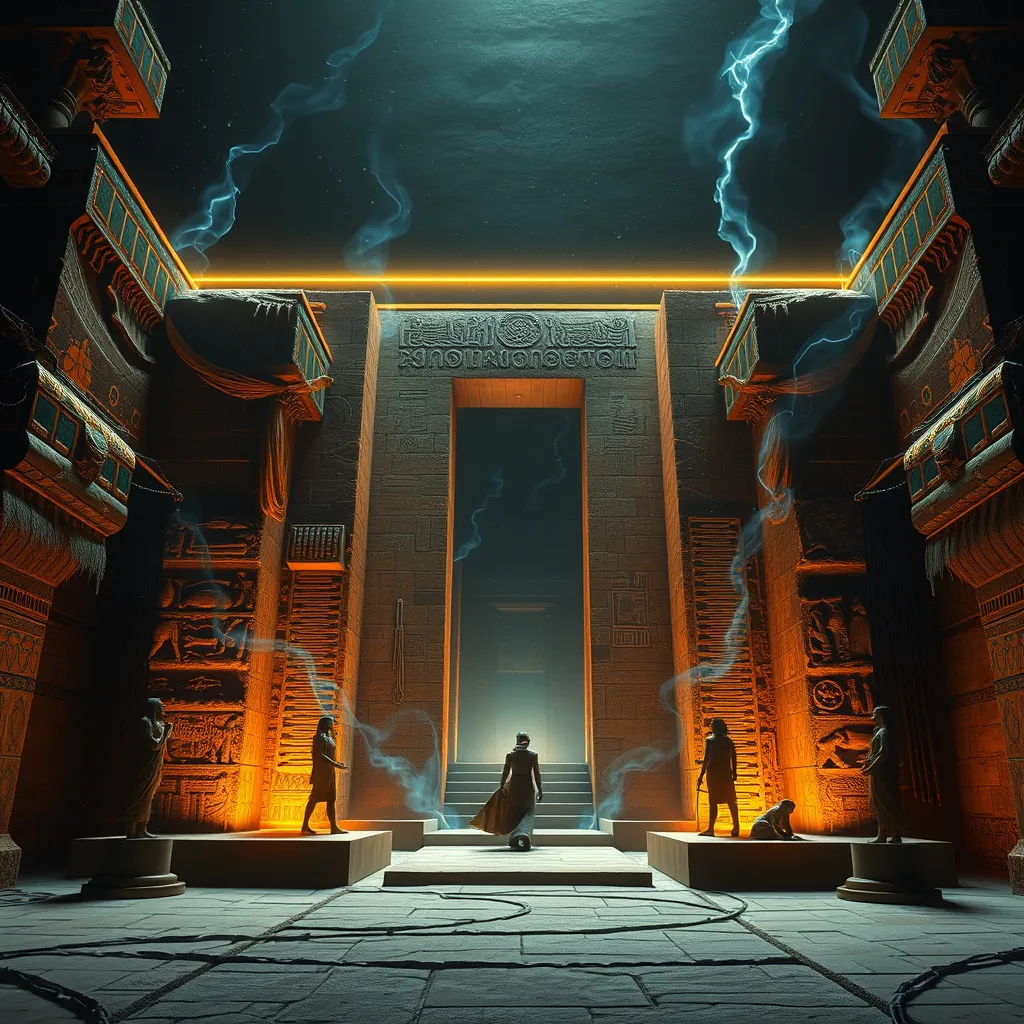The Duat: Unveiling the Secrets of the Afterlife
I. Introduction to the Duat
The Duat, often referred to as the Egyptian underworld, holds a critical place in Ancient Egyptian belief systems. It is not merely a destination for the dead; rather, it represents a complex realm filled with challenges, deities, and landscapes that reflect the values and fears of the living. Understanding the Duat allows us to grasp the broader concept of the afterlife as envisioned by the Ancient Egyptians.
In Egyptian mythology, the afterlife is a continuation of life on Earth, filled with opportunities for the deceased to live peacefully or face dire consequences based on their earthly deeds. The Duat symbolizes this duality of existence, encapsulating both the trials one must face and the ultimate rewards for a life well-lived.
II. The Mythological Landscape of the Duat
The Duat is often described as a vast, shadowy realm that lies beneath the surface of the earth, filled with rivers, fields, and eerie landscapes. Its geography varies significantly, representing different stages of the afterlife journey:
- The Waters of Chaos: This chaotic expanse is filled with serpents and dangerous creatures.
- The Field of Reeds: A serene area resembling the Nile delta, where the worthy enjoy eternal life.
- The Hall of Judgment: The critical location where the deceased face their ultimate fate.
In the Duat, numerous deities play vital roles, guiding and assisting the souls of the deceased. Key figures include:
- Osiris: The god of the afterlife, who presides over the judgment of souls.
- Anubis: The god associated with mummification and the protection of graves.
- Ma’at: The goddess of truth and justice, whose principles govern the judgment process.
III. The Journey Through the Duat
The journey through the Duat begins immediately after death. The soul, often depicted as a small feather or a human figure, embarks on a perilous voyage through various realms. This journey is fraught with obstacles and trials, some of which include:
- Confronting Demons: Souls must face terrifying creatures that guard the pathways.
- Crossing the Lake of Fire: A test of purity where the soul must remain unscathed.
- Navigating Dark Tunnels: These symbolize the uncertainty and fears of the afterlife.
Successful navigation through these trials is essential for the soul to reach the Hall of Judgment, where it will ultimately be weighed against the feather of Ma’at.
IV. The Role of the Book of the Dead
The Book of the Dead, a crucial element in Egyptian funerary practices, serves as a guide for the deceased on their journey through the Duat. This collection of spells, prayers, and incantations was designed to assist the soul in overcoming challenges and to ensure safe passage to the afterlife.
Key spells and illustrations found in the Book of the Dead include:
- Spell 125: The famous Weighing of the Heart ceremony.
- Spell 30: Ensuring protection from dangerous creatures in the Duat.
- Illustrations: Images depicting the journey, including gods and the landscape of the Duat.
These texts were often inscribed on tomb walls or placed in burial chambers to accompany the deceased in their afterlife journey.
V. Symbols and Iconography of the Duat
The Duat is rich with symbols that convey its significance and the beliefs surrounding it. Common symbols associated with the Duat include:
- The Ankh: Symbolizing eternal life.
- Lotus Flower: Representing rebirth and purity.
- Scarab Beetle: Associated with transformation and regeneration.
Funerary art and tomb inscriptions play a vital role in depicting the journey through the Duat. These artworks not only serve as a guide but also as a means for the deceased to communicate with the divine, ensuring their place in the afterlife.
VI. The Concept of Judgment in the Duat
The Weighing of the Heart ceremony stands as one of the most significant aspects of the Duat. In this ceremony, the heart of the deceased is weighed against the feather of Ma’at. The process includes:
- The heart, representing the soul’s deeds, is placed on one side of the scale.
- The feather, symbolizing truth and justice, is placed on the other side.
- If the heart is lighter than the feather, the soul is deemed worthy and granted passage to the Field of Reeds.
- If heavier, the soul faces annihilation by the monstrous Ammit.
This judgment process highlights the importance of ethics and morality in Egyptian life, as one’s fate in the afterlife directly reflects their earthly conduct.
VII. Cultural Impact and Legacy of the Duat
The Duat has had a profound influence on subsequent belief systems and religions. Its themes of judgment and the afterlife resonate within various spiritual practices, demonstrating the enduring human fascination with what lies beyond death. The concept of an afterlife where one’s deeds are evaluated can be seen in:
- Christianity’s judgment day.
- Islamic beliefs about the afterlife.
- Various indigenous belief systems that emphasize ancestral spirits.
In modern literature, art, and popular culture, themes of the Duat continue to appear, showcasing its lasting legacy. From films to novels, the fascination with Ancient Egyptian mythology, particularly the mysterious realm of the Duat, captures the imagination of audiences worldwide.
VIII. Conclusion
The Duat serves as a vital component in understanding Ancient Egyptian beliefs regarding the afterlife. It represents not only a journey of the soul but also a reflection of the values and ethics that governed Egyptian society. As we continue to explore the mysteries of the afterlife, the Duat remains a captivating subject that invites reflection on our own beliefs about life, death, and what may lie beyond.
In conclusion, the secrets of the Duat remind us of the universal human quest to understand and find meaning in existence, bridging the ancient past with contemporary questions about mortality and legacy.




